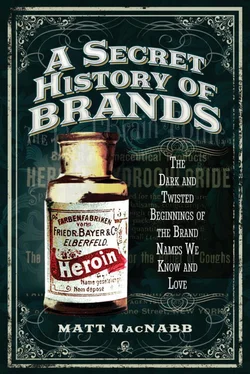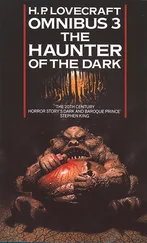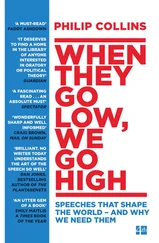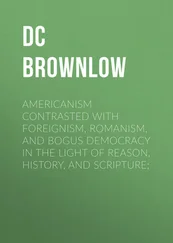Pemberton had moved to Atlanta to try and cash-in on the growing marketplace there. He wanted to develop a product that would stand apart from all others. It was in the basement of his Atlanta home that he constructed his own laboratory and he went to work. He would constantly send samples of his test products to the local Jacob Pharmacy. Desperate for something to actually sell, he would try out various combinations, until the feedback he got from the consumers showed that he had found a combination that tested well. Pemberton was finally successful in creating something unique. His drink was the first ever cola, not a type or flavour of cola, but the very first one. We can only imagine living in a world without all of the soda pop choices that we enjoy today. Coca-Cola was finally created on 8 May 1886 and to be among the first to taste such a delicious drink must have been amazing.
They finally had the formula for the cola, but the trick now was to actually get it into the hands of the consumer. The product first needed a name and a logo. Frank Robinson came up with the name Coca-Cola and he wrote the logo in a fancy script from his own hand, and history was made. The drink still uses a logo inspired by that original script to this very day. Robinson knew that he needed a great angle to market the drink and it was the very Temperance movement that brought an end to Pemberton’s last invention that would create the perfect nesting ground for his newest and most successful one.
The soda fountain was a cheerful and light-hearted place where you could get yourself an ice cream, mineral water or other various beverages and relax with friends. The popularity of the soda fountain would boom in many parts of Georgia once the Temperance movement began. It was no longer acceptable, or legal, to be in a bar or saloon. In fact, they had all been closed in 1885. The soda fountains quickly became a cultural hub and gathering place to meet with friends and discuss current events, politics and culture. There, men and women alike could converge and socialise, creating a vast and concentrated marketplace for an exciting new drink option. It was in the soda fountain that Coca-Cola would find its audience.
On 29 May 1886 the first ever Coca-Cola advert would appear in print, in the pages of the Atlanta Constitution newspaper. The advert, which was largely obscured by other adverts for a hat maker and photographer, read: ‘Coca-Cola, Delicious! Refreshing! Exhilarating! Invigorating! The new and popular soda fountain drink, containing the properties of the wonderful Coca plant and the famous Cola nuts.’ In the first year of business Pemberton would incur a total cost of $76 in expenses to produce and market Coca-Cola. This would involve sale of twenty-five gallons of syrup, making him $50 in profit. It is not difficult to see that these numbers don’t exactly equal success. In debt the first year of business, Pemberton would soon fall ill and become bedridden. It was during this time that Coca-Cola nearly fell to the wayside completely. Pemberton was still addicted to morphine, which wasn’t an inexpensive habit. He began to sell off the rights to his formula, eventually selling the patent to Asa Candler in 1888. Pemberton would succumb to stomach cancer on 16 August 1888 at the age of 57. He was buried back in his hometown of Columbus, Georgia, his tombstone emblazoned with the Confederate flag. Pemberton struggled with success and the distraction of his addiction may have played a large part of his constant undoing. Doc Pemberton would not live long enough to grasp what a success his invention would become, but the question must also be pondered, would it have been such a success had he lived and retained control of it?
After purchasing the patent for Coca-Cola in 1888, Asa Candler was responsible for the next stage of the drink’s success. In fact, some would say that Candler rescued the drink from certain failure. Candler had gone to Pemberton years before as a young man looking for work, only to be turned away. Proving himself to be a savvy businessman, Candler eventually found success as a druggist, opening his own very successful drugstore. When he was approached to purchase Coca-Cola, Candler originally baulked at the idea, because his drugstore didn’t contain a soda fountain in which to sell the drink. It wasn’t until Candler actually sampled the drink that he was completely sold on the idea. It could be referred to as the single most important serving of Coke. He was convinced that Coca-Cola could be a national drink with the right marketing, and boy was he right. He believed in Coca-Cola so much that he bought up all rights to distribute the drink. This move towards sole ownership would cost him around $2,300. Candler believed in the potential of Coca-Cola, and thus his aggressive marketing of the product began.
Coca-Cola wasn’t the only product that Candler owned. He would simultaneously promote Coke next to one of his other products, De-Lec-Ta-Lave dentifrice, a teeth cleansing powder. Obviously, Coca-Cola would end up being the more successful of the two. Candler was of the belief that just one glass of Coca-Cola would sell any potential customer, so he set out to convince America that his drink was special and not to be missed. The early promotional efforts were made by way of travelling salesmen. They had special card coupons that they would hand out that read: ‘This card entitles you to one glass of Coca-Cola at the fountain of any dispenser of genuine Coca-Cola.’ There were also flyer hand-outs with detachable cards that were also distributed. It seems like a given that handing out coupons for free samples of product is a great marketing ploy, but at the time when Candler did this, he was a pioneer. Other adverts would try to draw in ladies by mimicking a prescription slip that read: ‘Coca-Cola: Revives and Sustains. Take one glass of Coca-Cola when weary with shopping. It imparts energy and vigor.’ The idea that cola relieves fatigue and revives the weary was an angle that Candler would play upon for years. The free coupon promotion was a success with $7,700 worth of coupons redeemed in 1895 alone. That equates to 154,000 glasses of Coca-Cola. The sales were beginning to take off, but Candler needed to continue to be industrious with his marketing tactics – after all, you need paying customers too.
Candler would innovate another type of marketing that we still see in today’s world. He incorporated the Coca-Cola company logo into all kinds of everyday products, like posters, calendars, notebooks, bookmarks, etc. The idea was to get the product name in front of the customer at every point of their day. It was a wildly successful venture, creating a wide range of products that remain collectible to this day. Coca-Cola was quickly becoming a national drink and securing its spot in the marketplace.
Coca-Cola and Cocaine
Coca-Cola was born during an era when Victorian medicines often included sketchy ingredients and boasted themselves as a remedy for everything from the practical to the absurd. Coca-Cola was no different, in fact the soft drink was originally marketed as an ‘Intellectual Beverage’ and was again presented as a ‘valuable tonic’ and ‘nerve stimulant’, just as Pemberton’s French Wine Coca had been.
In time, the public began to turn on products that included coca leaves, due to a perception of increasing amounts of cocaine addiction in the populace. In 1891 a ‘thoughtful citizen’ wrote into The Constitution , an Atlanta newspaper:
The drug stores and soda founts are selling enormous quantities of something they call coca cola. It is said to relieve nervousness, and ‘that tired feeling’ and all that sort of thing, and people are drinking it a dozen times a day. I am told by a physician that the ingredient which makes coca cola so popular is cocaine. There is evidently enough of it in the drink to affect people and it is insidiously but surely getting thousands of people into the cocaine habit, which is ten times worse than alcoholism and as bad as the morphine habit. It is an awful drug and the victims of it are slaves. I have seen it!
Читать дальше












